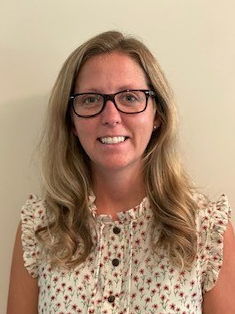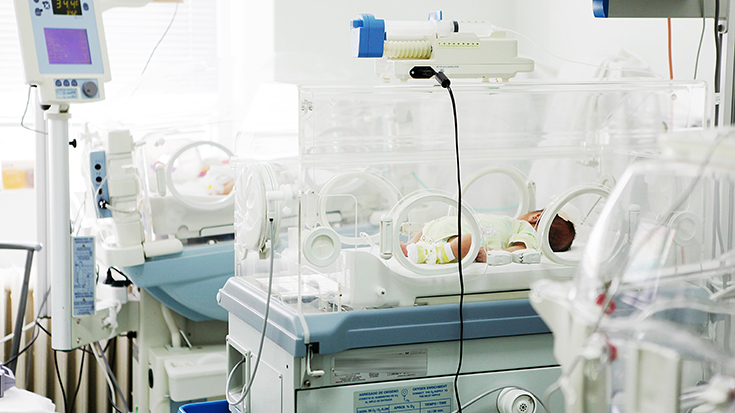
Patients who learn about their health and medical care are better at improving their well-being. Communication between a health care provider and a patient is the critical element in patient education. Providers must give patients complete and accurate messages. Well-educated patients can lead to better compliance with treatment plans and improve outcomes.1
As a respiratory therapist practicing in a care manager role, I spend most of my time educating patients and their families about asthma and chronic disease management. Every encounter with a patient and their family is a teaching opportunity. Using best practices will enhance the patient’s comprehension of their condition and prevent or minimize complications from their chronic disease.2 Respiratory therapists providing bedside care should incorporate patient education during that time.
Providers should give patients a goal. Preventing hospitalizations and readmissions is an objective for every patient. Educate patients at every encounter, beginning with the admission. Research indicates that patients are more knowledgeable and satisfied with the combination of written and verbal information.1 The following practices are some of the best I recommend when educating at the bedside.
The EDUCATE model
An EDUCATE model was created to help the educator meet teaching goals. The structure of this tool is applicable for providers leading an individual teaching session. The simple design of this model can modify current communication styles to incorporate instruction and learning goals into everyday conversation. The model acronym denotes: Enhance comprehension and retention, Deliver patient-centered education, Understand the learner, Communicate clearly and effectively, Address health literacy and cultural competence, Teaching and Education goals.1
For example, use a question list that patients can ask from, and providers can answer. Repeat the most critical information and increase the frequency of the message through several repetitions. Ask patients to repeat the information in their own words to ensure their understanding. Provide several different ways of explaining the education material.1
The Teach-Back Method
Use the leading teaching strategy, the teach-back method. This strategy involves asking the patient to repeat a concept, treatment plan, or other health information in their own words.3 When providing asthma education to patients and their families, and asthma action plan is provided and reviewed during the education session. This resource is a guided treatment plan for taking medications when having asthma signs and symptoms. Having the patient repeat their medication regimen is using the teach-back method in this situation. A respiratory therapist may include explaining the correct technique of medication delivery. Medical professionals should educate patients who have medications or medical equipment appropriately before discharge home. Encourage the patient to demonstrate the correct technique assuring proper instruction.
Listen to Patients
Talk with patients and their families, not at them. Practice empathy skills, such as understanding and listening, especially because the patient’s perspective is different from the provider’s. Pay attention to the patient’s worries and fears. Begin a discussion by asking the patients to share their goals of medical care. Include providing education to family members if they are present.1
Ask what the patient already knows about their diagnosis before providing information. Be aware of the patient’s verbal and nonverbal messages when delivering communication, including gestures, body language, and attire. Determine the patient’s barriers to health literacy. Realize that patients may not even be aware that they do not understand what is communicated to them.1
Practice Communicating
New communication skills require practice to use them effectively. Structured skill development exercises may be helpful for providers to study. Present the most important information first. Focus on one issue at a time and use concrete instructions. Use easy-to-understand language, explaining all medical terms. Patients must be allowed to ask questions before discharge and given time to speak.
Communicate Clearly
Supplement verbal education with simple written and visual materials. The materials should reinforce, not replace verbal instruction or direct interaction. Use an interpreter if a patient requires one due to language or disability. Do not ask the patient if they understand; they may say yes even if they don’t understand.1 Speak at a measured pace. Speaking too quickly may prevent patients from following the conversation.3 Adequately prepare yourself for teaching and learning. Practice quality teaching methods and overcome barriers to learning. Teach as an interactive process with the patient and their family.1
Other best practices for providing effective patient education to improve health outcomes include these five strategies: take advantage of educational technology, determine the patient’s learning style, stimulate the patient’s interest, consider the patient’s limitations and strengths and include family members in health care management. These tips are proven to enhance patient teaching sessions and better health outcomes.2
Adapt to the Patient’s Learning Style
Technology allows patient education materials to be more accessible. These tools can easily display resources directly to the patient at the bedside. Ensure the individual patient’s needs are met and addressed. It is not appropriate to hand the patient a stack of papers to read. The best practice is to review the material with instruction and answer questions they may have.2
Patients may have different learning styles. It is okay to ask your patient how they learn best. Providing resources in different modalities reinforces teaching. For example, the patient may prefer reading material or watching a video. If needed, information is available in different languages. The best method is a hands-on approach, allowing the patient to perform a procedure with guidance.2
The patient must understand the importance of education for their disease management. Use time and conversation at the bedside to build a relationship by asking and answering questions. Be considerate of specific patient concerns. For example, some patients prefer details about every aspect of their health conditions, while others may do better with just the facts.2 Respiratory therapists can complete this during their time at the bedside, providing care such as treatments or physical assessments.
Bedside Teaching
Consider the patient’s limitations and strengths may impact the ability to learn bedside teaching. This observation may involve recognizing any physical, mental, or emotional impairments. For example, some patients may require a larger font on printed materials, a visual education tool, or verbal instruction to be most effective. Always allow the patient to describe concepts and demonstrate the techniques of what you teach them.2 At the bedside environment, be aware that often people will agree or head nod they understand even if they do not.
The Importance of Family
Involving family patient members in education increases the probability that patients will follow instructions. Teaching families can be challenging, but they play a critical role in health care management.2 For example, most education and instruction are provided to family members when providing bedside care to pediatric patients. Therefore, it is essential family members and caretakers are present to allow this opportunity.
Effective Communication is Critical
The Joint Commission studied patient-provider communication as the root cause of sentinel events and found poor communication caused 10% of these events.4 Not all patient education sessions are successful. Communication is often mistaken or misinterpreted. While the bedside caregiver may have the best intentions, failed education may lead to poor outcomes or adverse events.2
Well-educated patients result from bedside providers taking every moment during patient interactions to provide teaching. In addition, there are tools available to improve communication skills with patients and their family members. These models will incorporate learning and teaching into everyday conversations.1 As respiratory therapists, we can improve our patient outcomes and overall well-being through providing quality bedside care and practicing education during each encounter.
References
- Marcus, C. (2014). Strategies for improving the quality of verbal patient and family education: a review of the literature and creation of the EDUCATE model. Health Psychology & Behavioural Medicine , 482-495.
- Health. (2017, August 23). Retrieved from Wolters Kluwer: https://wolterskluwer.com/en/expert-insights/5-strategies-for-providing-effective-patient-education
- Heath, S. (2018, January 5). Retrieved from Patient Engagement Hit: https://patientengagementhit.com/features/effective-nurse-communication-skills-and-strategies
- Oakbrook Terrace, I. (2010). Advancing effective communication, cultural competence, and patient-and family-centered care. A roadmap for hospitals. Retrieved from The Joint Commission : https://jointcommission.org/-/media/tjc/documents/resources/patient-safety-topics/health-equity/aroadmapforhospitalsfinalversion727pdf.pdf
Email newsroom@aarc.org with questions or comments, we’d love to hear from you.













